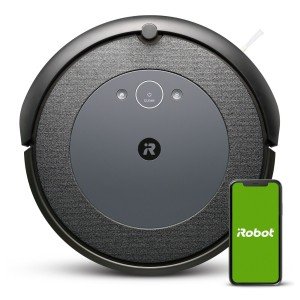The Rise of Robot Sweepers: Revolutionizing Household Cleaning
In the fast-paced world of innovation, robotic home appliances have emerged as valuable buddies in the quest for a cleaner home. Amongst these technological marvels, robot sweepers have actually acquired considerable appeal due to their capability to perform cleaning jobs efficiently while reducing human effort. This post checks out the intricacies of robot sweepers, their benefits, running systems, and their future in home cleaning.
What Are Robot Sweepers?
Robot sweepers, often described as robotic vacuum cleaners, are self-governing devices created to clean floors with minimal human intervention. Equipped with automatic vacuum , brushes, and suction abilities, these smart gizmos browse through living spaces, picking up dust, dirt, and particles effectively. They come in numerous sizes and shapes, accommodating various cleaning requirements and floor types.
Secret Features of Robot Sweepers
Smart Navigation Systems:
- Many robot sweepers utilize innovative navigation systems such as LIDAR or camera-based mapping to develop a comprehensive map of the area they clean up. These systems assist them browse efficiently and avoid obstacles.
Set up Cleaning:
- Users can often program robot sweepers to operate at specific times, making it simple to keep a tidy home without manual intervention.
Sensing units and Detectors:
- Robot sweepers are geared up with sensing units that allow them to find dirtier areas and change their cleaning strength accordingly. Some models can even determine stairs and ledges to avoid falling.
Compatibility with Smart Home Systems:
- Many robot sweepers can perfectly integrate with smart home ecosystems, making it possible for voice command functionalities and remote control via mobile phone apps.
Advantages of Using Robot Sweepers
Robot sweepers offer various benefits that make them interesting a wide variety of users:
Time-Saving:
- One of the most significant benefits of robot sweepers is their capability to conserve time. Users can set their devices to tidy while they engage in other activities, such as working or hanging around with family.
Effective Cleaning:
- With the capability to clean under furniture and in tight areas, robot sweepers typically reach locations that conventional vacuum can not, ensuring a thorough cleaning experience.
Decreased Physical Labor:
- Robot sweepers reduce the physical needs of cleaning, making them ideal for elderly people or those with mobility problems.
Consistent Maintenance:
- Regularly set up cleanings can promote much better total hygiene and health, particularly for individuals with allergies to dust or family pet dander.
User-Friendly:
- Generally created for ease of use, robot sweepers need minimal setup and can frequently be run with simply a few taps on a mobile phone app.
Table: Comparison of Popular Robot Sweepers
| Model | Smart Navigation | Suction Power | Battery Life | Price (Approx.) | Distinct Features |
|---|---|---|---|---|---|
| iRobot Roomba 980 | Yes | High | 120 minutes | ₤ 799 | CarpetBoost innovation |
| Neato Botvac D7 | Yes | Medium | 120 minutes | ₤ 599 | D-shape design for corners |
| Eufy RoboVac 30C | Basic | Medium | 100 minutes | ₤ 249 | Quiet operation |
| Roborock S6 | Yes | High | 180 minutes | ₤ 649 | Mopping capability |
| Ecovacs Deebot OZMO | Yes | Medium | 110 minutes | ₤ 399 | Smart mopping functions |
How Robot Sweepers Work
Comprehending the inner operations of robot sweepers can shed light on why they are so effective. Here's a simplified overview of the procedure:
- Mapping: The robot sweeper begins by scanning the environment to map out the area using laser sensors or cams.
- Navigation: Once the location is mapped, the robot makes use of the data to browse efficiently, cleaning partial areas before carrying on to others.
- Cleaning: Equipped with brushes and suction mechanisms, the robot sweeper collects particles and dirt from floors.
- Returning Home: Upon finishing its task or when the battery is low, the robotic vacuum instantly returns to its charging dock.
Frequently Asked Questions About Robot Sweepers
1. Can robot sweepers change conventional vacuum cleaners?
- While robot sweepers are excellent for preserving cleanliness and dealing with light dirt, they might not entirely replace conventional vacuums for deep cleaning tasks.
2. How frequently should I run my robot sweeper?
- It is advisable to run robot sweepers at least two times a week, depending upon foot traffic in your home.
3. Are robot sweepers suitable for animal owners?
- Yes, lots of models are particularly designed for animal hair removal and function specialized brushes and powerful suction choices.
4. Do robot sweepers deal with carpets?
- A lot of robot sweepers can clean up carpets successfully, however suction power and brush design might vary. High-end models frequently have settings to adapt to carpeted surfaces.
5. How much do robot sweepers cost?
- Rates differ based upon functions and brand names, varying from about ₤ 200 for budget alternatives to over ₤ 900 for high-end models with advanced capabilities.
The expansion of robot sweepers marks a considerable development in family cleaning innovation. While they might not entirely change conventional cleaning approaches, robot sweepers offer unrivaled convenience, efficiency, and the ability to decrease physical pressure on users. As technology advances, these devices are likely to become even smarter, more effective, and more integrated with other smart home systems, making them a staple in contemporary homes. Ultimately, redirected here of robot sweepers is a testimony to the evolving landscape of home cleaning solutions-- one that improves every day life and promotes a cleaner living environment.

